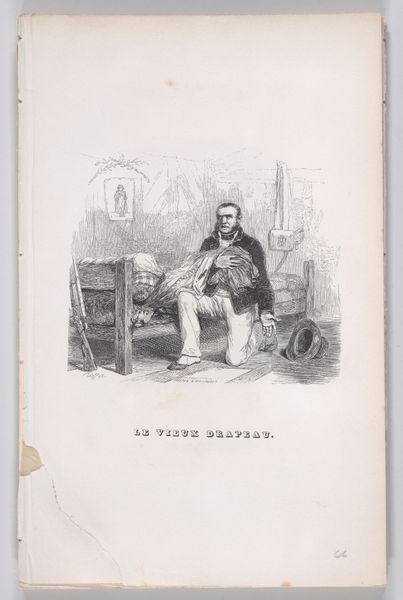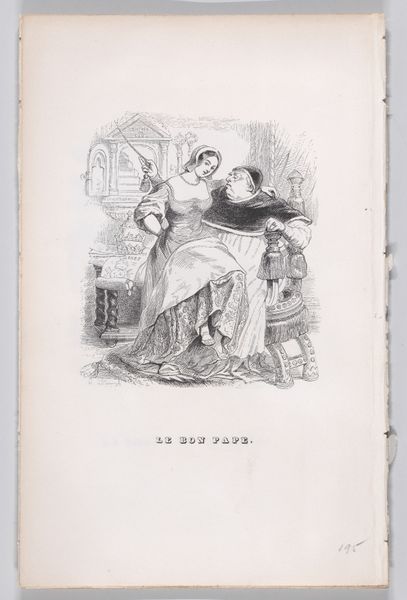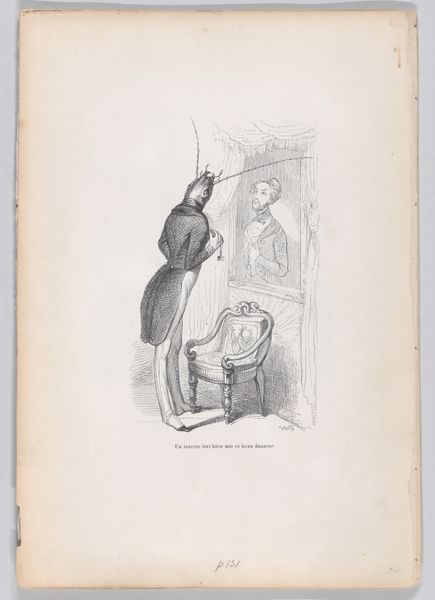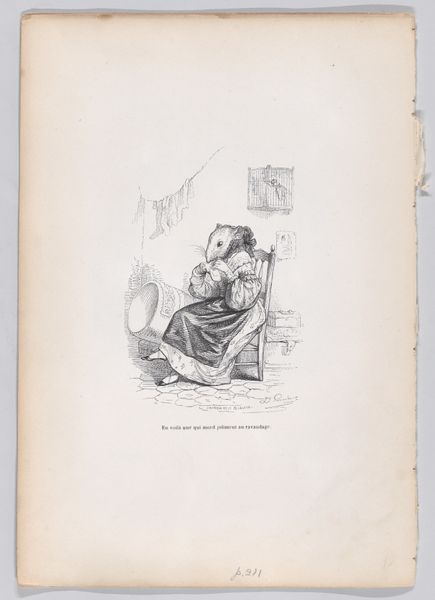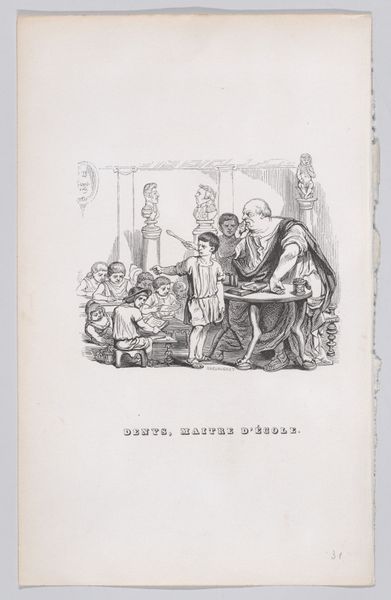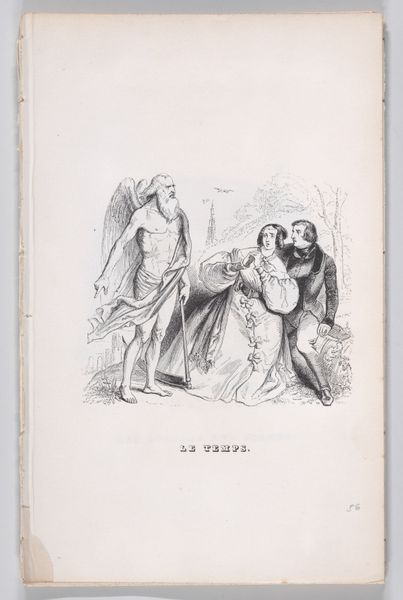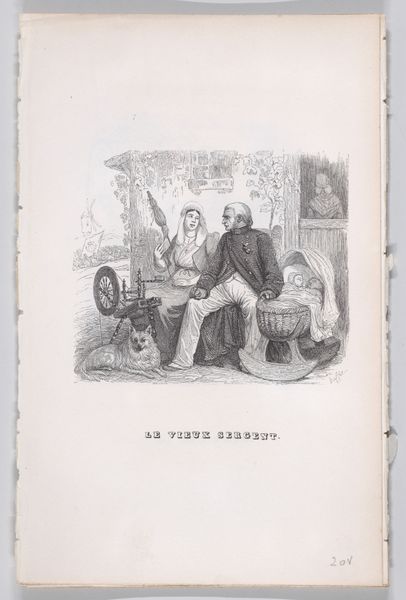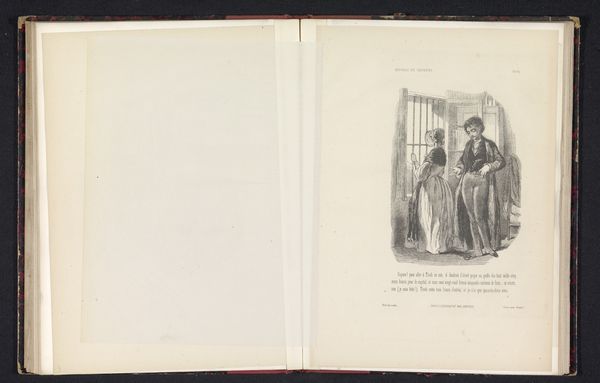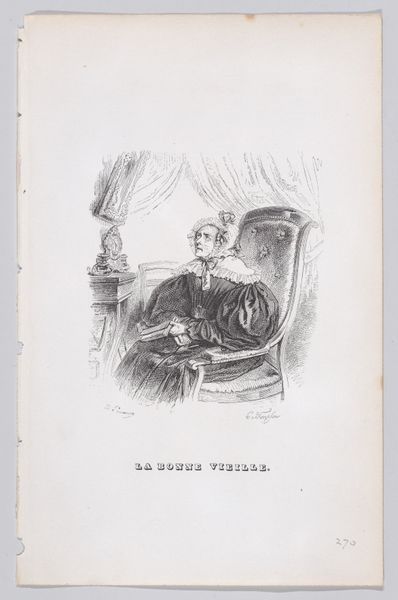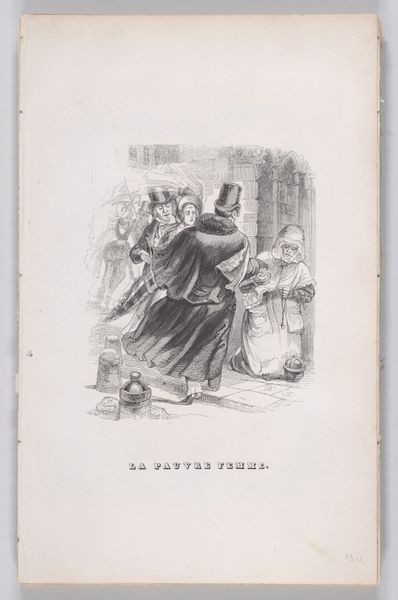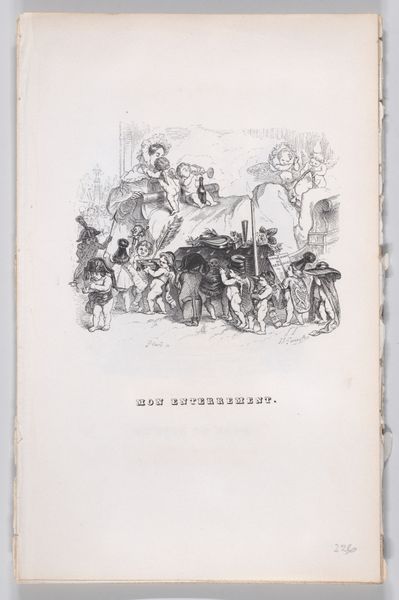
"The Five Stages" from The Complete Works of Béranger 1836
0:00
0:00
drawing, lithograph, print, etching
#
drawing
#
narrative-art
#
lithograph
# print
#
etching
#
romanticism
#
genre-painting
Dimensions: Sheet: 8 5/8 × 5 1/2 in. (21.9 × 14 cm)
Copyright: Public Domain
Curator: Before us we have J. J. Grandville’s lithograph, etching and drawing “The Five Stages” published in 1836 as part of The Complete Works of Béranger, a French poet. It is now part of the collection at the Metropolitan Museum. Editor: My first impression is of something bittersweet, a meditation on aging seen through the lens of everyday life. The detailed inkwork really brings a certain charming, yet melancholic quality to the stages of life displayed. Curator: I agree. Grandville, known for his satirical and anthropomorphic works, is commenting on the journey from childhood innocence to the frailty of old age. But I think the social context, the printmaking process used to disseminate it broadly, reveals just as much as his personal perspective. How was this consumed, by whom, and what did owning such a representation entail? Editor: I find the use of lithography interesting here. It allows for the production of very detailed imagery relatively inexpensively, granting access to a wider segment of the populace than, say, a painting. This work makes visible broader social currents around that period. Curator: Precisely. The etching emphasizes linearity, contributing to its clarity. But what about the content, these carefully framed moments within the five stages? Are they moments of personal importance or universal rites of passage? Editor: I believe he is emphasizing universal experience. Consider the choice of rendering these images for the medium. The act of reproducing imagery is essential, it's an inherently public process. Also, consider the role the museums or galleries play. How is taste formed in this milieu? How do socio-political issues affect or transform artwork of this kind? Curator: That’s insightful. Grandville uses his medium to critique society but in a manner accessible and, dare I say, designed to entertain while it educates. And in turn, institutions reinforce specific ways of perceiving that content. Editor: These characters and stories become both representative and symbolic of the broader sweep of time and existence. Its cultural impact is still significant. Curator: Thinking about its availability, production, and context illuminates Grandville's skill in reflecting a moment while revealing processes that would change it forever. Editor: A compelling intersection of craftsmanship and societal commentary, certainly giving much to consider about the enduring legacy of such processes.
Comments
No comments
Be the first to comment and join the conversation on the ultimate creative platform.

